[Editor’s Note: This is the text of a speech that former Mayor Art Agnos gave at San Francisco Tomorrow’s annual dinner on May 21. We reprint it here in its entirely so readers can hear directly what Agnos has been saying on the campaign trail in support of Prop. B]
I am delighted to speak to the members and friends of SFT about the waterfront tonight…and a special shout out to Jane Morrison as one of the pioneer professional women in the media and one of the finest Social Service Commissioners in our City’s history.
I also welcome the opportunity to join you in honoring tonight’s unsung heroes: Becky Evans, with whom I have worked closely over the past year and half; Tim Redmond, the conscience of the progressive community for the past 35 years; and Sara Shortt and Tommi Avicolli Mecca from the Housing Rights Committee, who stand up every day for poor and working people who need a voice in our city.
Twenty-four years ago, in 1990, I made one of the best decisions of my mayoralty when I listened to the progressive environmental voice of San Francisco and ordered the demolition of the Embarcadero Freeway. That freeway was not only a hideous blight but also a wall that separated the city from its waterfront.
Hard to believe today, but it was a very controversial decision back then. Just three years before, in 1987, the voters had defeated a proposal by Mayor Feinstein to demolish it. The Loma Prieta Earthquake gave us a chance to reconsider that idea in 1990.
Despite opposition of 22,000 signatures on a petition to retrofit the damaged freeway, combined with intense lobbying from the downtown business community led by the Chamber of Commerce, North Beach, Fisherman’s Wharf, and especially Chinatown, we convinced the Board of Supervisors to adopt our plan to demolish the freeway, by one vote.
And the rest is history — until today.
After a period of superb improvements — that include a restored Ferry Building, the ball park, two new public piers where one can walk further out into the bay than ever before in the history of this city, the Exploratorium, the soon to be opened Jim Herman Cruise Ship Terminal, Brannan Wharf Park — there is a new threat.
Private development plans that threaten to change the environment of what Herb Caen first called “our newest precious place,” not with an ugly concrete freeway wall, but with steel and glass high-rises that are twice as tall. Today, the availability of huge amounts of developer financing, combined with unprecedented influence in City Hall and the oversight bodies of this city, the waterfront has become the new gold coast of San Francisco.
Politically connected developers seek to exploit magnificent public space with high-rise, high profit developments that shut out the ordinary San Franciscan from our newest precious place. We love this city because it is a place where all of us have a claim to the best of it, no matter what our income, no matter that we are renter or homeowner, no matter what part of the city we come from.
And connected to that is the belief that waterfront public land is for all of us, not just those with the biggest bank account or most political influence. That was driven home in a recent call I had from a San Franciscan who complained about the high cost of housing for home ownership or rent, the high cost of Muni, museum admissions, even Golden Gate Bridge tours, and on and on.
When he finished with his list, I reminded him I was mayor 23 years ago and that there had been four mayors since me, so why was he complaining to me? “Because you are the only one I can reach!” he said.
Over the past few weeks, that message has stuck with me. And I finally realized why. This is what many people in our city have been seeking, someone who will listen and understand. Someone who will listen, understands, and acts to protect our newest precious place, our restored waterfront.
You see, it was not just about luxury high-rise condos at 8 Washington last year. It was not just a monstrous basketball arena on Pier 30-32 with luxury high-rise condos and a hotel across the street on public land. It’s about the whole waterfront that belongs to the people of San Francisco, all seven and a half miles of it, from the Hyde Street Piers to India Basin. And it must be protected from the land use mistakes that can become irrevocable.
This is not new to our time: 8 Washington and the Warriors arena were not the first horrendous proposals, they were only the latest. Huge, out of scale, enormously profitable projects, fueled by exuberant boosterism from the Chamber of Commerce, have always surfaced on our waterfront.
Fifty years ago, my mentor in politics, then-Supervisor Leo McCarthy said, “We must prevent a wall of high rise apartment along the waterfront, and we must stop the filling in of the SF bay as a part of a program to retain the things that have made this city attractive.”
That was 1964. In 2014, former Board of Supervisors President Aaron Peskin said it best this way: “It seems like every 10 years, every generation has to stand up to some huge development that promises untold riches as it seeks to exploit the waterfront and our public access to it.”
Public awareness first started with the construction of the 18 stories of Fontana towers east and west in 1963. That motivated then-Assemblyman Casper Weinberger to lead public opposition and demand the first height limits, as well as put a stop to five more Fontana-style buildings on the next block at Ghirardelli Square. This was the same Casper Weinberger who went on to become Secretary of HEW [formerly the Department of Health, Education, and Welfare] and Secretary of Defense under President Ronald Reagan.
In 1970, the Port Commission proposed to rip out the then “rotting piers” of Piers 1 – 7 just north of the Ferry Building. They were to be replaced with 40 acres of fill (three times the size of Union Square) upon which a 1200-room hotel and a 2400 car garage would be built.
It passed easily through Planning and the Board of Supervisors. When the proposal was rejected on 22 to 1 vote by BCDC [the San Francisco Bay Conservation and Development Commission], Mayor Alioto complained, “We just embalmed the rotting piers.”
No, we didn’t, we saved them for the right project. And if one goes there today, they see it, the largest surviving renovated piers complex with restaurants, walk-in cafes, Port offices, free public docking space, water taxis, and complete public access front and back. In 2002, that entire project was placed on the U.S. National Historic Register.
But my favorite outrageous proposal from that time was plan to demolish another set of “rotting piers” from the Ferry Building south to the Bay Bridge. And in place of those rotting piers, the plans called for more landfill to create a Ford dealership car lot with ,5000 cars as well as a new shopping center. That too was stopped.
So now it’s our turn to make sure that we stop these all too frequent threats to the access and viability of our waterfront. In the past two weeks, we have seen momentum grow to support locating the George Lucas Museum on Piers 30-32 or the sea wall across the Embarcadero.
I love the idea, but where would we be with that one if a small band of waterfront neighbors and the Sierra Club had not had the courage to stand up to the Warriors and City Hall two years ago. Once again, they used the all too familiar refrain of “rotting piers” as an impending catastrophe at Piers 30-32.
Proposition B will help prevent mistakes before they happen. Most of all, Prop. B will ensure protection of the Port on a more permanent basis by requiring a public vote on any increases to current height limits on Port property. All of the current planning approval processes will stay in place — Port Commission, Planning Commission, Board of Permit Appeals, Board of Supervisors, all will continue to do what they have always done.
But if a waiver of current height limits along the waterfront is granted by any of those political bodies, it must be affirmed by a vote of the people. Prop B does not say Yes or No, it says Choice. It is that simple. The people of SF will make the final choice on height limit increases on Port property.
The idea of putting voters in charge of final approval is not new. In the past, the people of San Francisco have voted for initiatives to approve a Children’s budget, a Library budget, retaining neighborhood fire stations, minimum police staffing, as well as to require public authorization for new runway bay fill at our airport. And at the Port itself, there have been approximately 18 ballot measures to make land use and policy decisions.
So we are not talking about ballot box planning, we are talking about ballot box approval for waivers of existing height limits on public property. Opponents like Building Trades Council, Board of Realtors, and Chamber of Commerce are raising alarms that we will lose environment protections like CEQA by creating loopholes for developers. Astonishing!
Prop B is sponsored by the Sierra Club. Tonight we honor Becky Evans of the Sierra Club who sponsored Proposition B. That same set of opponents are joined by city bureaucrats issuing “doomsday” reports stating that we will lose thousands of units of middle class housing, billions of dollars in Port revenues, elimination of parks and open space on the waterfront. Astonishing!
These are the same bureaucrats who issued glowing reports a couple of years ago that the America’s Cup would mean billions in revenue for the Port and the city. And they wanted to give Oracle’s Larry Ellison 66-year leases to develop on five of our Port piers for that benefit! Now, how did THAT work out? So far, City Hall will admit to $11 million in known losses for the taxpayers. Another opponent, SPUR [San Francisco Planning and Urban Research Association], says any kind of housing will make a difference and there are thousands in the pipeline, so don’t worry. Astonishing!
We have not seen one stick of low income or affordable housing proposed on the waterfront since the ‘80s and ‘90s when Mayor Feinstein and I used waterfront land for that very purpose. Hundreds of low-income housing dwellings like Delancey Street and Steamboat Point Apartments, affordable and middle class housing like South Beach Marina apartments and Bayside village, comprise an oasis of diversity and affordable housing in the midst of ultra expensive condos.
For me, that was part of an inaugural promise made in January 1988. I said, “At the heart of our vision is a refusal to let San Francisco become an expensive enclave that locks out the middle class, working families, and the poor. At the center of our strategy is a belief in the basic right of people to decent jobs and housing.”
Yes, that was the commitment on public land on the waterfront by two mayors of a recent era, but not today. Indeed, San Francisco has been rated the #1 least affordable city in America, including NY Manhattan. That is one of the many reasons we see middle class people, as well as working poor, being forced to leave San Francisco for Oakland and elsewhere in the Bay Area.
That reality was reinforced in the February 10, 2014 issue of Time Magazine. Mayor Lee said, “I don’t think we paid any attention to the middle class. I think everybody assumed the middle class was moving out.”
Today, an individual or family earning up to $120,000 per year — 150 percent of the median in this city — does not qualify for mortgage and can’t afford the rent in one of the thousands of new housing units opening in the city. The Chronicle reported a couple of weeks ago that a working family of three who have lived in a rent-controlled studio apartment in the Mission was offered $50,000 to leave.
That is what the purely developer-driven housing market offers. And that philosophy is reinforced by a Planning Commission whose chair was quoted in December 2013 issue of SF Magazine saying, “Mansions are just as important as housing.”
Prop B changes that dynamic by putting the citizen in the room with the “pay to play” power brokers. That is what it is all about my friends: Power.
Former SF city planning director and UC School of City Planning Professor Alan Jacobs recently related what he called the Jacobs Truism of land economics: “Where political discretion is involved in land use decisions, the side that wins is the side with the most power. And that side is the side with the most money.”
Prop B will ensure that if developers are going to spend a lot of money to get a height waiver on Port property, the best place to spend it will be to involve, inform, and engage the citizen as to the merit of their request, not on the politicians. Today that power to decide is in a room in City Hall. I know that room. I have been in that room.
You know who is there? It is the lobbyists, the land use lawyers, the construction union representatives, the departmental directors, and other politicians. You know who is not in the room? You. The hope is that someone in that room remembers you.
But if you really want your voice to be heard, you have to go to some departmental hearing or the Board of Supervisors, wait for three or four hours for your turn, and then get two minutes to make your case. Prop B changes that dynamic and puts you in the room that matters. No more “advisory committees” that get indulged and brushed off. No more “community outreach” that is ignored.
It will all matter. That is why today there is no opposition from any waterfront developer. They get it. We are going to win. It is easy to see how the prospect of Prop B on the ballot this June has changed the dynamics of high-rise development along the waterfront.
The Warriors have left and purchased a better location on private land in Mission Bay. The Giants have publicly announced that they will revise their plans with an eye to more appropriate height limits on Port land. Forest City is moving with a ballot proposal to use Pier 70 to build new buildings of nine stories, the same height as one of current historic buildings they will preserve on that site for artists.
The Pier 70 project will include 30 percent low-income, affordable and middle class housing on site, along with low-tech industries, office space, and a waterfront promenade that stretches along the entire shoreline boundary. A good project that offers what the city needs will win an increase in height limits because it works for everybody. A bad one will not.
My friends, I have completed my elected public service career. There will be no more elections for me. And as I review my 40 years in public life, I am convinced of one fundamental truth: The power of the people should, and must, determine what kind of a city this will be.
It must not be left to a high-tech billionaire political network that wants to control City Hall to fulfill their vision of who can live here and where. It starts with you, the people of this city’s neighborhoods, empowered to participate in the decisions that affect our future. You are the ones who must be vigilant and keep faith with values that make this city great.
This city is stronger when we open our arms to all who want to be a part of it, to live and work in it, to be who they want to be, with whomever they want to be it with. Our dreams for this city are more powerful when they can be shared by all of us in our time.
WE are the ones, here and now, who can create the climate to advance the San Francisco dream to the next generation. And the next opportunity to do that will be election day June 3.
Thank you.




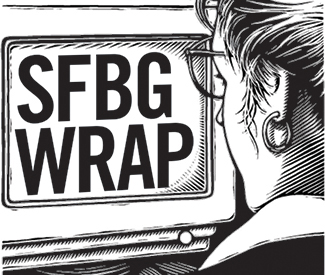
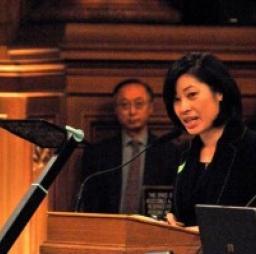





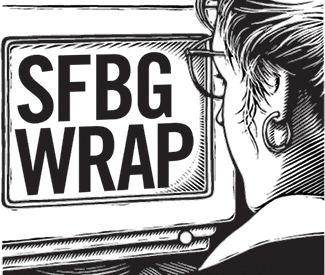


 So paid parking meters benefit many diverse constituents, and even SFMTA Executive Director Ed Reiskin publicly favored them. Making Sunday meters free again wasn’t Reiskin’s idea, he told us back in February.
So paid parking meters benefit many diverse constituents, and even SFMTA Executive Director Ed Reiskin publicly favored them. Making Sunday meters free again wasn’t Reiskin’s idea, he told us back in February.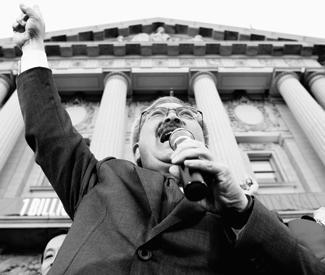
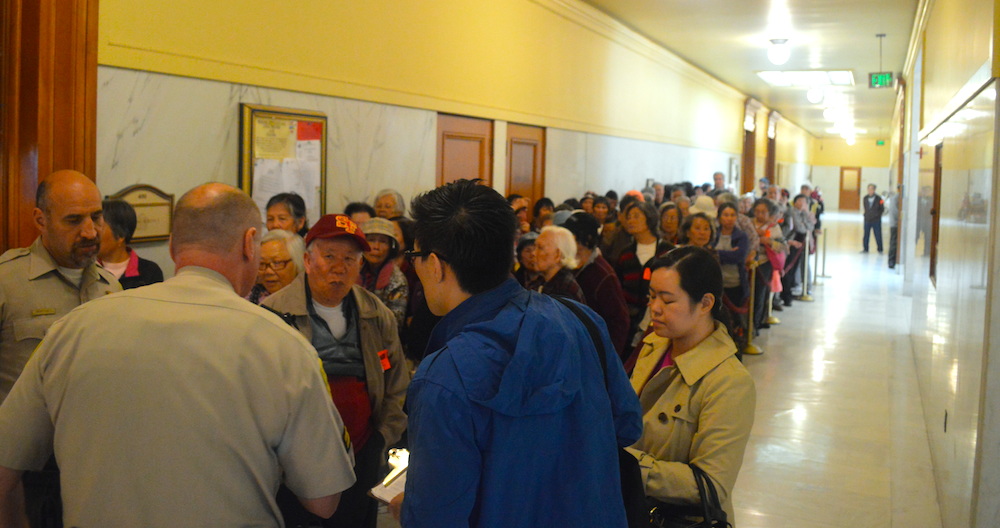





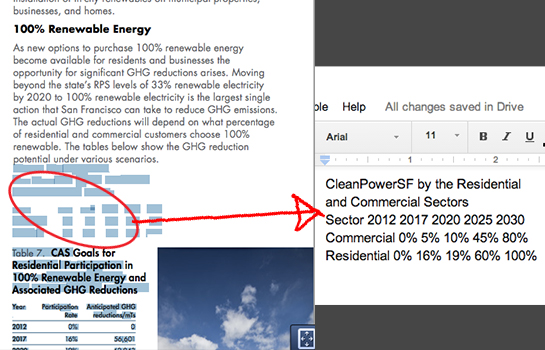
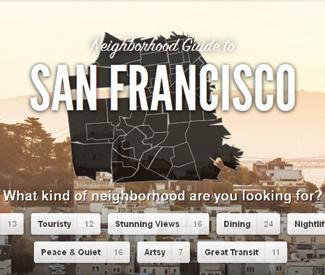
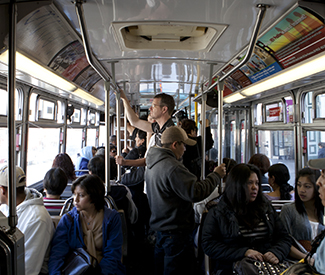

![Ammiano and Leno seek to reform the Ellis Act and slow SF evictions [UPDATED] Ammiano and Leno seek to reform the Ellis Act and slow SF evictions [UPDATED]](https://sfbgarchive.48hills.org/wp-content/uploads/sites/2/ammiano1.jpeg)